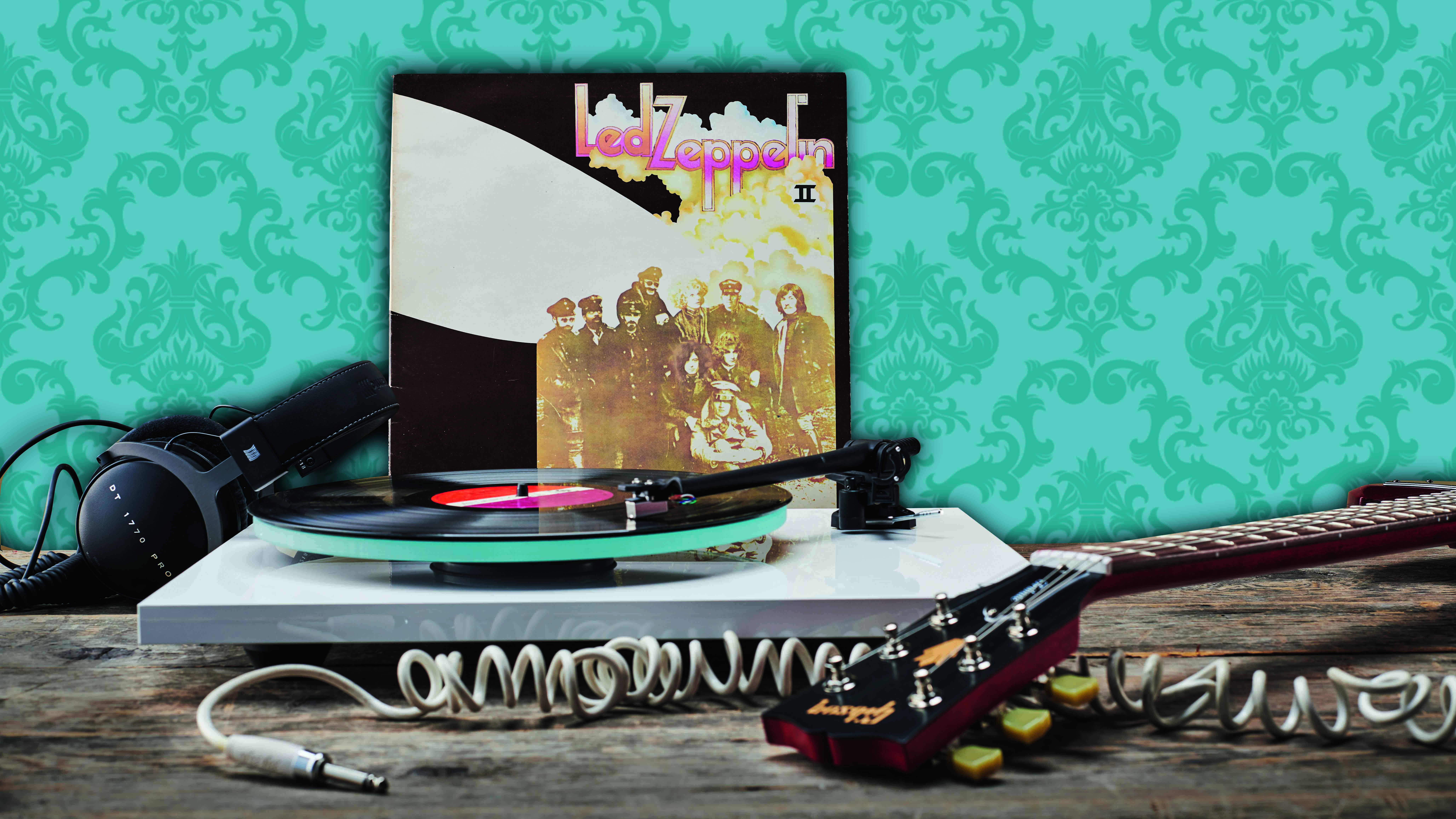
We covered Led Zeppelin I in a lesson already, but with the rock-oriented sound of II came heavy riffs. Lots of them! And, though Whole Lotta Love and Heartbreaker are the bona fide classics, even deeper cuts like Living Loving Maid (She’s Just A Woman), Ramble On, Moby Dick and Bring It On Home rocked hard and influenced many.
Of course, we’re looking at some of the vital elements of Jimmy Page’s burgeoning love affair with the guitar riff as well as a typical solo lick. Suffice to say, the minor pentatonic scale is at the heart of much of Page’s work, so learn this vital scale across the whole fretboard.
Today, it’s perhaps no surprise that powerchords, palm muting, pentatonics and maxxed out amps are at the core of the sound. In ’69, though, this was influencing a generation of hard rock bands that would follow. Testament to Led Zeppelin and indeed to Jimmy Page’s own lasting legacy in rock music.
1. Heavy riffing
Inspired by tracks like Whole Lotta Love, Heartbreaker and Ramble On, we’re showcasing a few of Page’s heavy riffing tricks here. The open sixth string is palm muted for a thicker, drier sound.
The chords are played as accents in between by lifting the palm mute momentarily. Select a bridge humbucker with a medium overdrive tone.
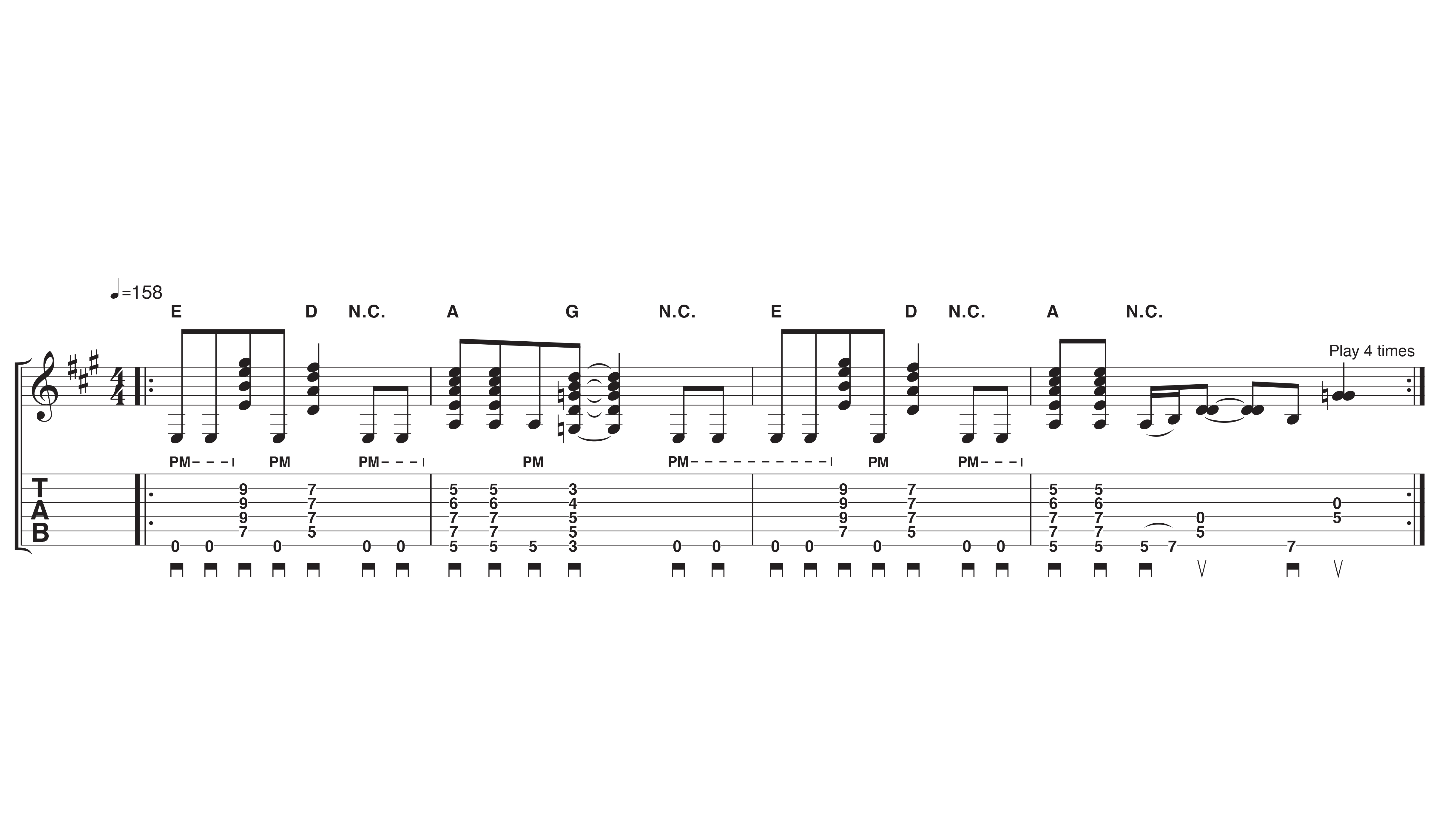
2. Short pentatonic phrases in solos
This lick takes bite-sized minor pentatonic phrases and repeats them as you ascend or descend the scale – one of Page’s trademarks in the years that would follow.
Listen carefully and you can hear the early development of this approach in Jimmy’s leads in Heartbreaker, Ramble On and even drum-led epic Moby Dick.
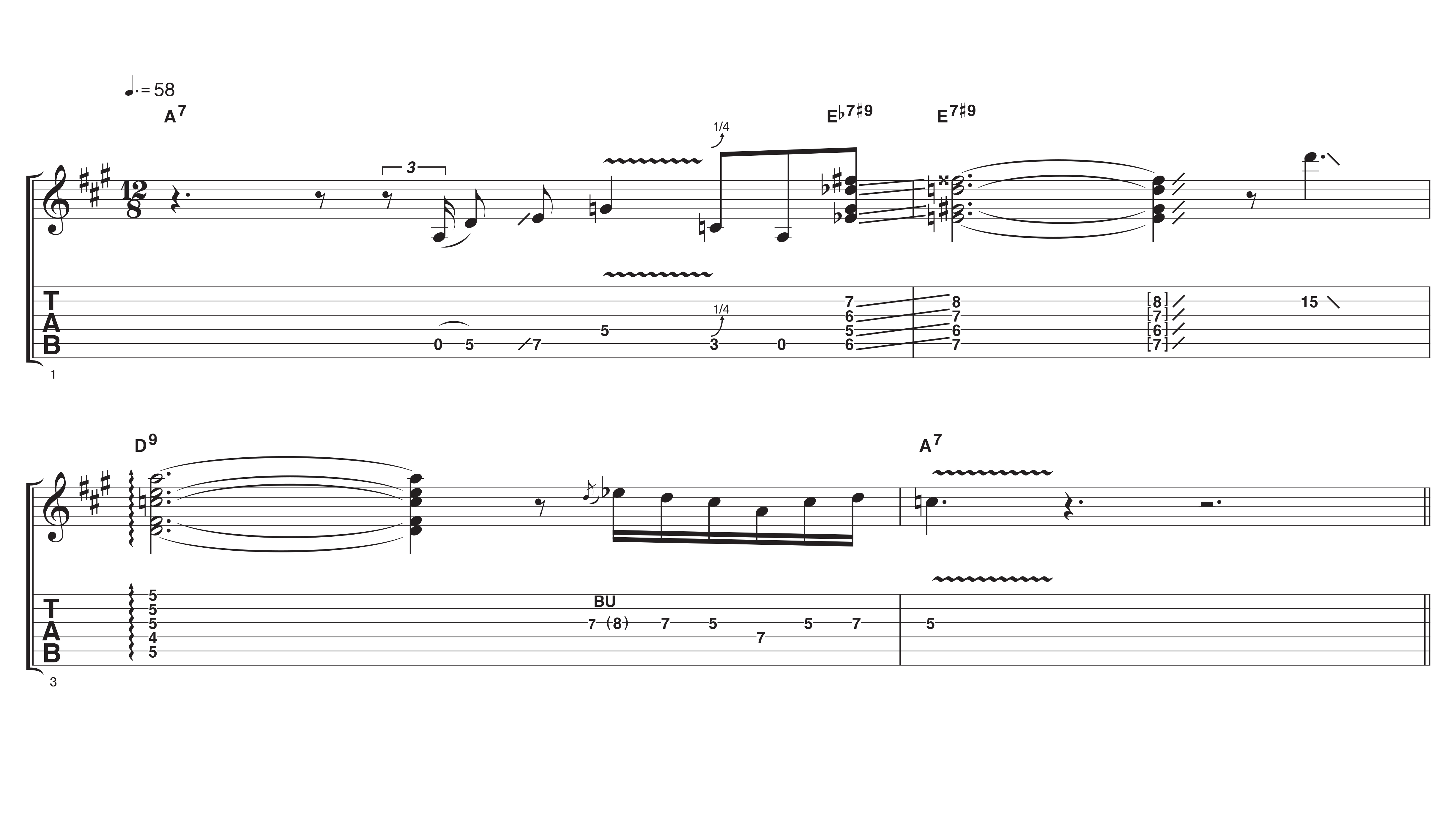
3. The scale remains the same
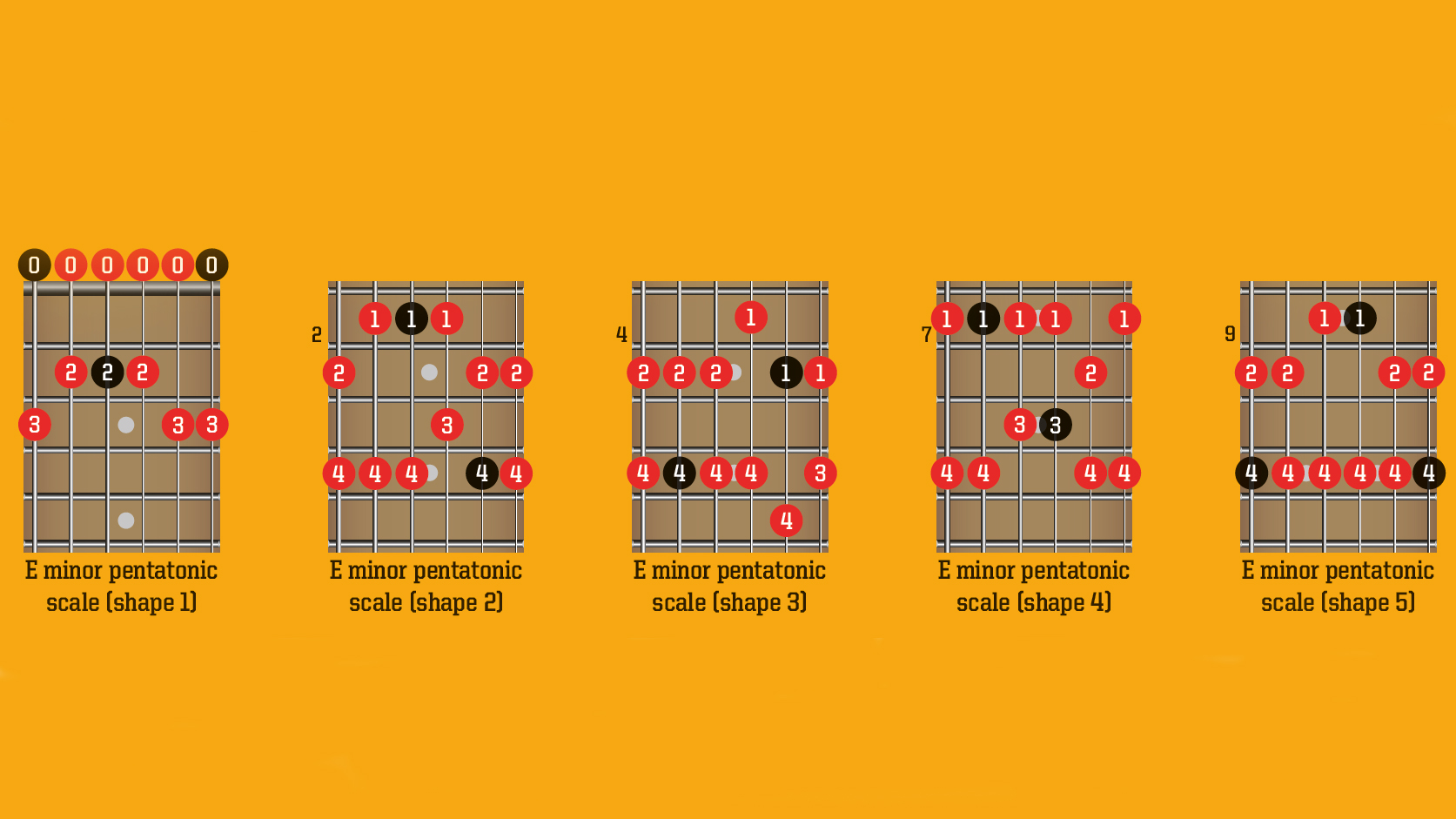
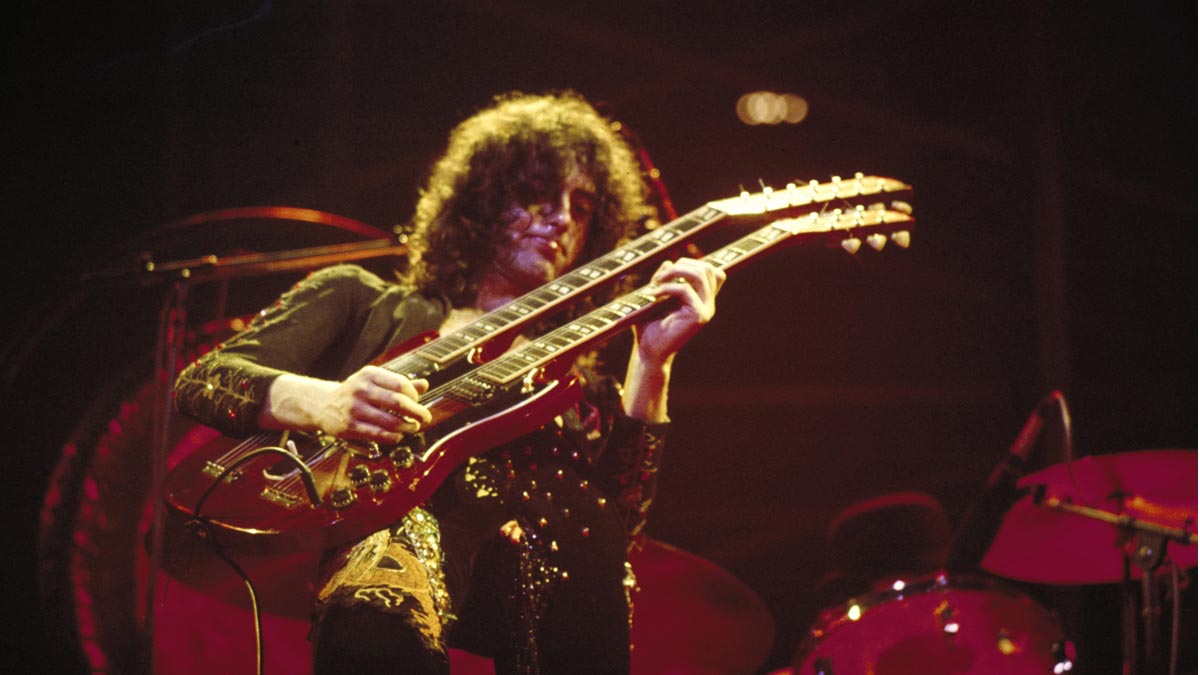
Play across the whole fretboard with five different shapes but just one scale? Yes indeed. These five shapes all outline the E minor pentatonic scale. How so? Well, you probably know that most notes on the guitar can be played at more than one fret – and this simple fact means you can play entire scales all over the neck.
Each shape sacrifices some higher and lower notes compared to its neighbour, but that doesn’t matter. Start shifting from shape to shape in your next E minor solo.







